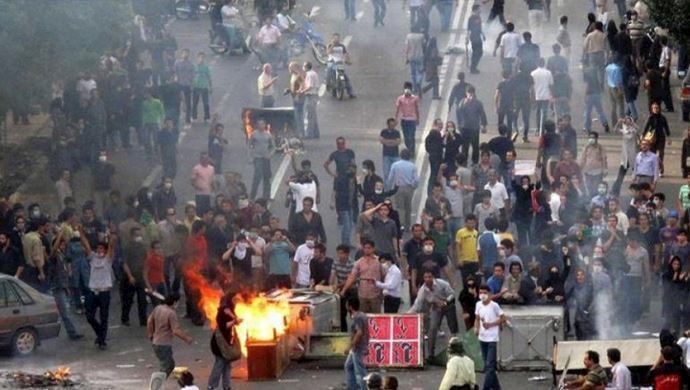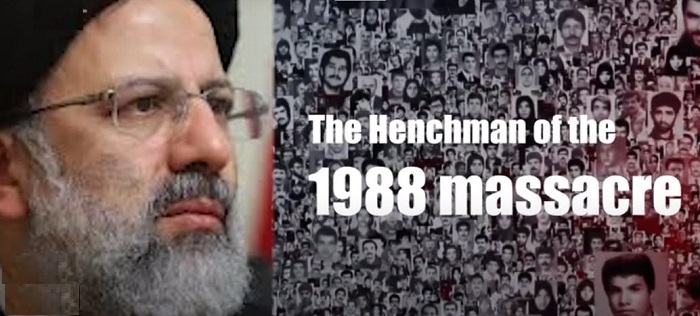
For more than four decades, Iran’s theocratic dictatorship has justified its rule in part with a narrative that says it is the only viable option for the governance of an Iranian nation.
Since mid-September, Iranians have taken to the streets to protest the death of Mahsa Amini, 22. The violent enforcement of a government dress code that requires women to cover their heads with a hijab has sparked outrage that has since grown into Iran’s biggest protest movement in years.
The start of protests
Amini’s hometown of Saqqez saw the start of protests, which then spread to major cities like the capital, Tehran, and Mashhad as well as diverse ethnic communities like Azerbaijani Turks, Arabs, and Baluchis. Despite a government crackdown by both police and the Basij, which, according to the Iranian opposition People’s Mojahedin of Iran (PMOI/MEK), has resulted in over 400 deaths and 20,000 arrests, the movement is now in its fifth week.
“There have been demonstrations before, but this feels completely different,” laborer Sohrav Shalchi said from Tabriz, in northern Iran.
As of 12:00 pm Tehran time on October 16, protests in #Iran have expanded to 191 cities.
Over 400 people killed and more than 20,000 arrested by the regime's forces. The PMOI/MEK has published the names of 206 killed protesters.#IranRevoIution2022#اوین#آزادی_آزادی_آزادی pic.twitter.com/LNXozy1S5d
— People's Mojahedin Organization of Iran (PMOI/MEK) (@Mojahedineng) October 16, 2022
They’ve had enough of this regime.
“We’ve been protesting for several days. Initially, it was mostly women. I’ve seen young women with their arms exposed confronting armored vehicles, declaring that they’ve had enough of this regime.”
“However, it is no longer just girls who are protesting. We, men, have changed since the days of Khomeini’s rule. When we see a younger lady, such as Mahsa, killed on this approach, it’s as if my daughter has died. They are not going to get away with it,” he explained.
We are seeking a new order based on freedom, democracy, and equality. #IranRevolution#IranProtests pic.twitter.com/nu6BKeqvFo
— Maryam Rajavi (@Maryam_Rajavi) October 15, 2022
Ruthless so-called morality police
Mahsa Amini was a victim of Tehran’s ruthless morality police. She was a Kurdish ethnic minority member from Saqqez, a town in northwest Iran. She was brutally beaten by morality police and died of her injuries in a Tehran hospital on September 16. He noted that the widespread poverty in Iran has laid the groundwork for these protests to continue.
“The government has already admitted that two-thirds of all Iranians live below the poverty line. I’m one of these individuals. I’ve worked hard my entire life, but I still earn less than £300 per month. I can’t afford to buy or maintain a car, and we only eat meat on occasion because it now costs £8 per kilo and is considered a luxury.”

Mahsa was arrested on September 13 and beaten by the regime’s morality police under the pretext of “mal-veiling.” She went into a coma for three days and died on September 16.
The poverty line
While the death of Mahsa Amini sparked the current uprising, Iranians have been targeting the regime as a whole. Millions of Iranians have been struggling to make ends meet on wages that are already below the poverty line, and unemployment has risen. To make matters worse, regime officials have raised their own pay, while many regime insiders have reportedly been involved in massive thefts and corruption, causing poverty to spread more quickly and directly.
“Right here in Tabriz, we go for days without electricity, and the water we now drink smells like sewage. We’ve been without clean drinking water for several months.”
“We do not blame the United States or sanctions. We live in a wealthy nation. We continue to sell one million barrels of oil every day. However, this money is not spent on us.”

The proper wage for a family of four or the poverty line must be at least twelve million rials. If we look at the population as a whole, you can see that roughly 70% of people live below the relative poverty line.
Raisi, the henchman
“Raisi has always expressed a desire for a return to Islamic values… They [Iranians] see he’s determined to return the Islamic Republic to the early days of Khomeini when girls could be beaten up in the streets and laws…”
However, the crackdown has backfired because men oppose it. “In Iran, there is a profound cultural respect for women that predates Islam,” said Iran expert Catherine Perez-Shakdam of the Henry Jackson Society assume tank.

When Ali Khamenei, the regime’s supreme leader, named Ebrahim Raisi as president last year, the 1988 massacre’s influence on regime politics reached its zenith.

